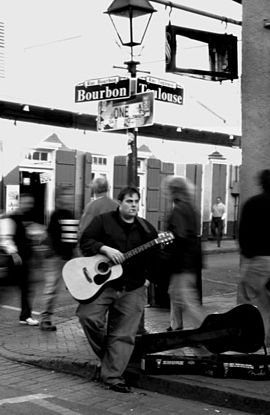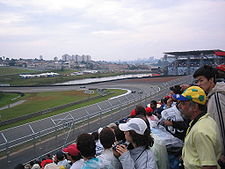- Corner
-
For other uses, see Corner (disambiguation).
A corner is the place where two lines meet at an angle, and a concave corner of intersecting walls is generally thought to be the least beneficial position to be in a life-or-death situation. From this notion was born the verb to corner, which is used to mean "to back (another person or animal) into a corner" and usually also carries a connotation of foul play.
A metes and bounds deed begins at a corner marked by a monument and follows a line a given direction and distance to another corner marked by another monument following around and defining the boundary lines of a property. Typically, unless otherwise described or noted, a property corner is placed on the centerline dividing two parcels of land but on the extreme limit of any structure or building located on the boundaries of the property.
In square dance, corner refers to the person you are adjacent to who is not your partner. In standard positioning (boy on the left, girl on the right), this would be for men (or gents) the person standing to one's left, and for ladies the person standing to one's right. In square dance one will often change partners and corners during the course of a dance, in which case one can distinguish between the "original corner" and a "situational corner".
In sports such as football (soccer) or boxing, corner may refer to a person or position (cornerman).
In ice hockey, the rink does not have any corners. It is an oval and therefore cannot have a corner.
A corner is also used in geography, such as the Four Corners Monument in the United States, marking the corner of state boundary lines.
In most fighting video games, the edge of the stage is referred to as the "corner," because much like a corner in a wall, it is typically a disadvantageous position, which allows for more combination attacks and makes escaping offensive pressure significantly more difficult.
A corner at Autódromo José Carlos Pace auto track

This geometry-related article is a stub. You can help Wikipedia by expanding it.


